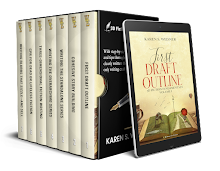In horror fiction and dark fantasy, we encounter two main types of scientifically explained vampires -- vampirism as an infectious disease or as a hereditary condition. In the latter case, if the vampire belongs to a naturally evolved different species or human subspecies (as opposed to, say, a mutation in one family line, although in many stories the distinction is fuzzy or left unspecified), that's what I mean by "vampire as alien." They might either originate on Earth or migrate here from another planet.
In my opinion THE VAMPIRE TAPESTRY, by Suzy McKee Charnas, is one of the best vampire novels of the twentieth century. It’s one of the earliest book-length works of fiction to explore the question, “How would nature design a vampire?” (as the vampire himself rhetorically asks in the first section of the book). The inimitable Dr. Weyland, the sole survivor of his species, so old he remembers no parents or childhood, holds an acerbic view of the human race, the “cattle” he preys on. Although he can’t digest animal blood and therefore must feed on people, to avoid unwelcome attention he usually refrains from killing or seriously harming his victims. He has great physical strength and endurance and extremely keen senses, but no overtly “supernatural” abilities such as transformation or mesmerism. THE VAMPIRE TAPESTRY chronicles a series of events that open him unwillingly to an emotional connection with some of the short-lived creatures he prowls among. He periodically renews himself by withdrawing into a state of suspended animation, to rise decades later with his clear-eyed predator’s perspective restored.
The naturally evolved vampire occasionally appeared in short stories of the classic pulp era, e.g., the vampire child of Richard Matheson’s “Dress of White Silk,” the family of “monsters” in Ray Bradbury’s “Homecoming,” the pragmatic predator in Jerome Bixby’s “Share Alike.” With the veritable explosion of vampire fiction that started in the mid-1970s, however, especially with a new emphasis on vampires as sympathetic protagonists, natural vampires proliferated at novel length.
Miriam in Whitley Strieber’s THE HUNGER, like Weyland, is the last of her species (as far as we can tell in this novel; the sequel, published years later, reveals otherwise). Unlike Weyland, she admits to being lonely, treats her human companions like pets, and tries to transform some of them into creatures like herself -- with consistently disastrous results. Elaine Bergstrom in SHATTERED GLASS introduces the Austra clan, subjects of several later novels. They can interbreed with human beings, and they have tremendous powers, including regeneration from severe injuries, telepathy, and the hypnotic compulsion common to many literary vampires. The nonhuman creatures in FEVRE DREAM, by George R. R. Martin, combine traits of the traditional vampire and werewolf, since they go into a frenzy of uncontrollable bloodlust for only a few days each month. They can’t reproduce with our kind, and their race is dying out because of the infrequency with which their females go into heat. Jacqueline Lichtenberg presents a race of extraterrestrial vampires in THOSE OF MY BLOOD. Stranded on Earth, they’ve interbred with humanity. One faction, the Tourists, regards human beings as simply prey, while the other group, the Residents, has a moral and emotional investment in the welfare of the people around them. These vampires can exert powerful influence over unsuspecting human minds. Octavia Butler introduces a child vampire whose family has been wiped out in FLEDGLING. Her vampires live in symbiosis with human companions who often fill the role of lovers as well as food source. S. M. Stirling's Shadowspawn trilogy, beginning with A TAINT IN THE BLOOD, features a human subspecies underlying all the darkest myths and legends of vampires, werewolves, incubi, ghosts, and sorcerers. It's a homage to and updating of the same concept in Jack Williamson's classic DARKER THAN YOU THINK.
In the design of a natural vampire, many questions have to be answered, leading to practically endless intriguing variations: Can they breed with human mates? Are they solitary or pack predators? Can they consume any food besides blood? If not, does the blood have to be human, or can it come from other animals? Do they have to kill when they feed? Do they have any adverse reaction to sunlight? (Daylight didn’t destroy the classic nineteenth-century vampires such as Carmilla and Dracula, nor were all folklore vampires limited to nocturnal activity.) Are they immortal or only long-lived? What can kill them? What powers do they have? Any psychic abilities?
Many other authors besides the few mentioned here have explored these possibilities. I analyze this theme in fiction from the mid-nineteenth century to the early 1990s in my nonfiction book DIFFERENT BLOOD: THE VAMPIRE AS ALIEN:
Different Blood (This mini-essay first appeared on a now-defunct blog called VampChix. I plan to continue reposting these retro-reviews of older vampire fiction here in the near future. Since they're all over ten years old, and VampChix was taken down quite a while ago, they'll probably be new to our readers.)Margaret L. Carter
Please explore love among the monsters at Carter's Crypt.



































